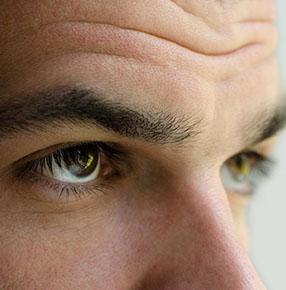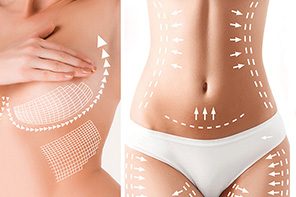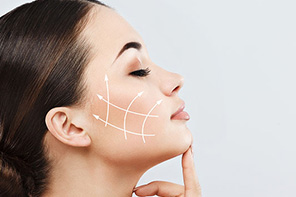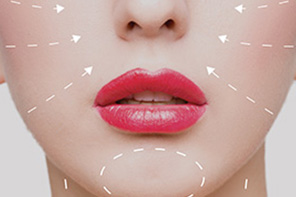
Forehead Lifting Surgery
The forehead is an important part of the face, with time, signs of aging such as wrinkles and drooping eyebrows will appear. Usually the cosmetic operation of the forehead is performed on patients over the age of 40 years. However, assessment of the condition by an experienced plastic surgeon plays an important role.
The forehead process improves the face shape and lifts the drooping eyebrows by removing excess tissue, adjusting the muscles, and tightening the skin. People who suffer from genetic conditions such as: small or wide forehead or wrinkles above the nose, get a beautiful and consistent appearance with the process. The final result of the surgery depends largely on the quality of the skin and the experience of the cosmetic surgeon. Continued results also depend on other signs of aging.

When Should a Forehead Lift Be Done?
This procedure is often performed on people in their 40s and 60s to hide the effects of aging. It can also help people with hereditary conditions, such as lines lined over the nose or dangling eyebrows. At the youth period, the low eyebrows that might give the face a “sad” look can be raised by the process. The procedure can also be performed on people whose eyebrows are too low, which affect their appearance.
Anyone who has one or more of these following causes can do a forehead lift:
- Wrinkles between the eyes.
- Horizontal wrinkles on the front.
- Drooping eyebrows.
- Tissues that hangs in the outer part of the eyelids.

The risks of anesthesia and surgery in general which are:
- Negative reaction against some medications.
- Breathing problems.
Risks of Forehead Lifting surgery include:
- Blood pool may need to be surgically drained.
- Wounds that do not heal well.
- Numbness or other changes in skin sensation.

Before the operation, the doctor will perform all physical examinations and psychological assessments. The desired shape will be determined based on your expectations. Do not hesitate to ask questions. Make sure you understand the answers to your questions. You must fully understand the preparations before the operation, the process itself, care after operation.
For one week before the procedure, you may be asked to stop using blood transfusions, these medications may cause bleeding during the operation. Some of these drugs are aspirin, ibuprofen (Advil, Motrin), naproxen (oliv, naprosin). And if you are using Warfarin (Coumadin), Dipigatran (Pradaxa), Apexapan (Ellicis), Refaroxapan (Xarlito) or Clopidogrel (Plavix), talk to your surgeon before stopping or changing these medications.
During the few days before the operation:
- Ask about medicines that you can continue to use until the day of the operation.
- Always tell your doctor if you have cold, flu, fever, or any other disease in the run-up to the procedure.

On surgery day:
- You may be asked to refrain from eating and drinking after midnight in the night before the operation. Which includes chewing gum and mint. Wash your mouth with water if it is dry. Be careful not to swallow.
- Use your prescribed medicines with a small sip of water.
- Be sure to follow any other instructions by your doctor.
During the process, the excess skin is removed, and stiffened and the muscles are adjusted, to hide signs of aging such as dangling eyebrows, slack eyelids, and horizontal wrinkles on the front. The procedure can be done on its own or with other procedures such as facelift, eyelid, or rhinoplasty. Usually the patient comes out on the same day of the operation and does not stay in the hospital.
During the process you will be awake, but you will get local anesthesia so you do not feel the pain. You may also get a painkiller. In some special cases, general anesthesia is used.
The risks of anesthesia and surgery in general which are:
- Negative reaction against some medications.
- Breathing problems.
Risks of Forehead Lifting surgery include:
- Blood pool may need to be surgically drained.
- Wounds that do not heal well.
- Numbness or other changes in skin sensation.
Before the operation, the doctor will perform all physical examinations and psychological assessments. The desired shape will be determined based on your expectations. Do not hesitate to ask questions. Make sure you understand the answers to your questions. You must fully understand the preparations before the operation, the process itself, care after operation.
For one week before the procedure, you may be asked to stop using blood transfusions, these medications may cause bleeding during the operation. Some of these drugs are aspirin, ibuprofen (Advil, Motrin), naproxen (oliv, naprosin). And if you are using Warfarin (Coumadin), Dipigatran (Pradaxa), Apexapan (Ellicis), Refaroxapan (Xarlito) or Clopidogrel (Plavix), talk to your surgeon before stopping or changing these medications.
During the few days before the operation:
- Ask about medicines that you can continue to use until the day of the operation.
- Always tell your doctor if you have cold, flu, fever, or any other disease in the run-up to the procedure.
On surgery day:
- You may be asked to refrain from eating and drinking after midnight in the night before the operation. Which includes chewing gum and mint. Wash your mouth with water if it is dry. Be careful not to swallow.
- Use your prescribed medicines with a small sip of water.
- Be sure to follow any other instructions by your doctor.
During the process, the excess skin is removed, and stiffened and the muscles are adjusted, to hide signs of aging such as dangling eyebrows, slack eyelids, and horizontal wrinkles on the front. The procedure can be done on its own or with other procedures such as facelift, eyelid, or rhinoplasty. Usually the patient comes out on the same day of the operation and does not stay in the hospital.
During the process you will be awake, but you will get local anesthesia so you do not feel the pain. You may also get a painkiller. In some special cases, general anesthesia is used.
We feel free to share some feedback from our honorable Patients

Garret D'silva,

Mary Fathima,

Helen Garcia,
During surgery Forehead Lifting
- The hair will be removed from the operation area. Hair shaving may be needed in front of the forehead line
- The surgeon will perform an incision at the ear level. This slit will pass through the upper part of the forehead into the hair line
- If you are bald, the surgeon may make an incision in the middle of the scalp to avoid visible scars
- After removing excess tissue, skin and muscle adjusting, the surgeon closes the incision with sutures or pins.
Before putting bandages, your hair and face will be washed so the skin of the scalp will not be irritate.
After Forehead Lifting
The area is wrapped with a flexible bandage to prevent bleeding and swelling. You will feel numbness and temporary discomfort after the operation, which you can control by using painkillers. Keep your head up for 2 to 3 days after the operation to prevent swelling.
Bruising and swelling occur around the eyes and cheeks, but will begin to disappear within a few days or a week. As the nerves grow, you will feel numb in the forehead, scalp, itching or twitching. It may take up to 6 months for these senses to disappear completely. Bandages will be removed after one or two days of operation. Within 10 to 14 days, stitches or pins will be removed in two stages.








